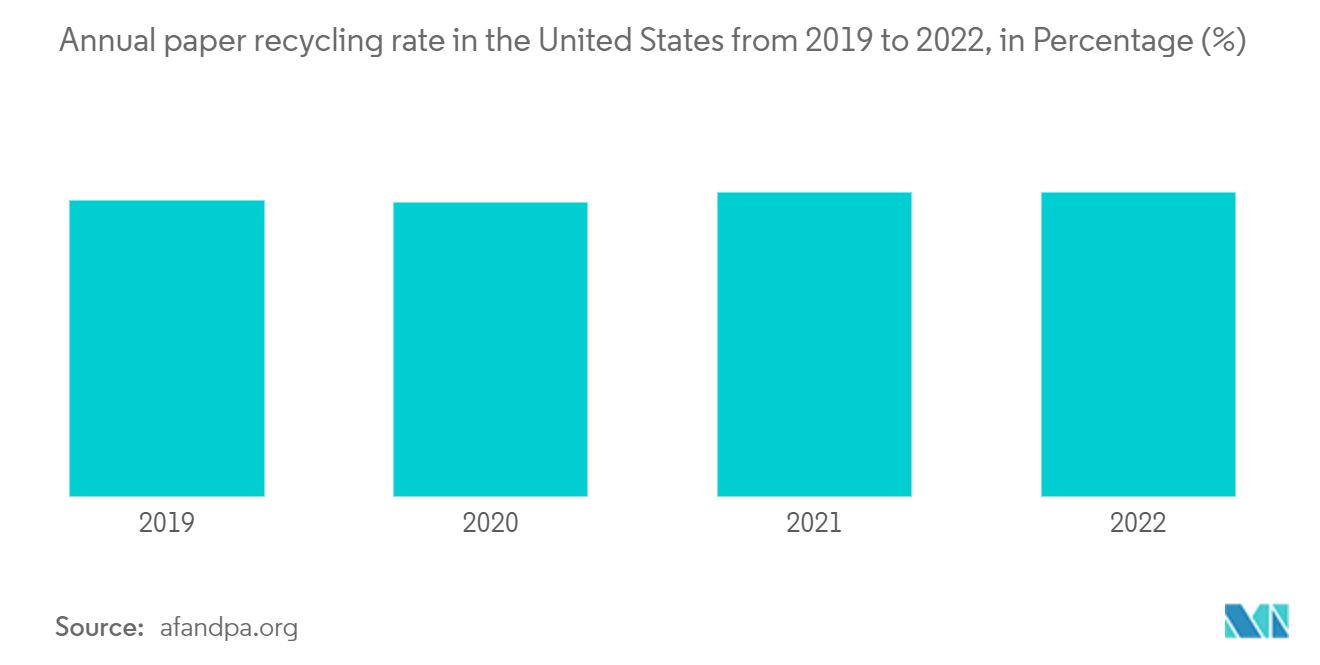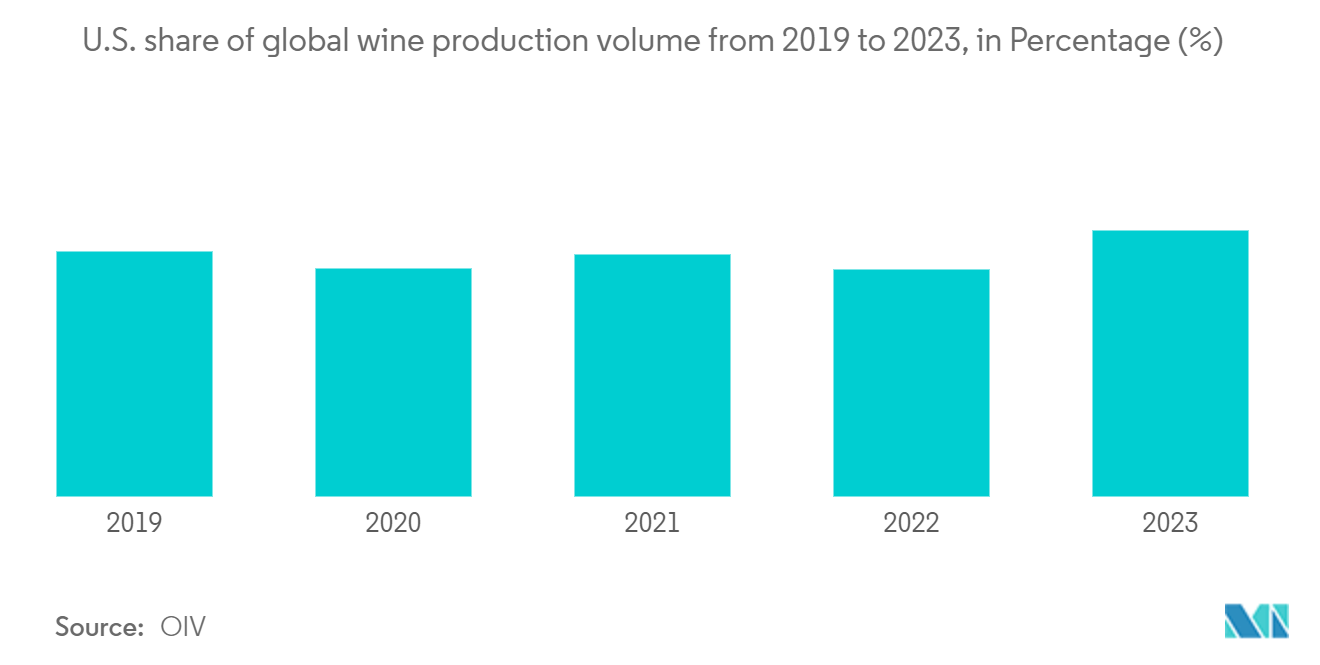Market Trends of United States Print Label Industry
Pressure-sensitive Labels Accounts for the Largest Market Share
- Pressure-sensitive labels (PSL) consist of five individual layers, such as liner, release coat, adhesive, face stock, and topcoat, and are analogous to a high-tech sticker. A PSL can use paper, film, and foil as its primary label materials and can be used with a wide range of inks to produce sharp and bright colors.
- The PSL is one of the most widely used forms of label applicator, as it does not require any heat, solvent, or water to activate; it only takes light or moderate pressure to apply it to a product surface. According to the Resource Label Group and all subsidiaries, PSLs constitute more than 80% of all labels in the market.
- In a highly competitive market like the traditional world of beer labeling, one of the most important factors in making a label stand out from the crowd and the competition is having a unique look and feel. For this reason, traditional wet glue labels are quickly being replaced by pressure-sensitive labels or sleeves because of the various embellishment possibilities and the superior appearance.
- The traditional beer labeling world prefers wet glue labels because they are very cost-effective, especially for large-scale, long-lasting jobs. On the other hand, with more decoration, a label that stands out on a crowded shelf is more likely to be noticed. A concrete and effective alternative to wet glue labels is pressure-sensitive labels. Pressure-sensitive labels offer better adhesive properties and more decoration options on a reverse-printed mirror solution with metallic effects in advancements. This is why players operating in United States, focus on catering to the changing market needs.
- Pressure pressure-sensitive labels are used in the food and drink, pharmaceutical, consumer goods, personal care, and construction industries. Depending on the application, different adhesives may make pressure-sensitive labels permanent or reusable.The vendors serving these industries are working on the front line to continue producing and supplying label materials for critical consumer and healthcare products. However, the raw material prices are rising, coupled with increased competition and evolving printing and decorating technologies.

Beverage is Expected to Account For Significant Market Share
- The beverage is one of the primary end-user industries for the US print label market, owing to the high rate of adoption of innovative label and packaging in the beverage sectors and the growing market for the health drinks segment.
- Sales of significant beverage categories is expected to cross USD 170 billion by 2024. Although the consumption of some beverage segments in the country was affected during the pandemic, the scope of many segments expanded due to the COVID-19 outbreak.
- Furthermore, the country is home to some of the largest carbonated beverage companies, along with a strong market for energy drinks, which are increasingly adopting new packaging techniques to attract customers. These companies are also printing their ingredients on their labels, as health-related concerns are growing among US consumers, expanding the scope of printing. Also, these ingredients may vary between brands and specific energy drink products.
- With the growing wine market, the need for labeling is becoming crucial. Most of the wine labels use paper label look or no label look with film label. In addition, labels need to be designed to withstand the environment in which they are shipped, stored, and used. Therefore, the growing number of wineries in the country will also expand label printing and manufacturing.
- As sustainability becomes more of a presence in the labeling supply chain, there will be an increased use of recycled and recyclable materials. Top material choices will include PET, bioplastic, and thicker reusable glass. As sustainability becomes more critical in the labeling supply chain, they will likely see increased use of recyclable label materials. In addition, Avery Dennison promotes several technologies for sustainability, including its CleanFlake adhesive technology for PET bottle recycling, ClearCut Adhesive technology, and a variety of paper and film face stocks for beverage labeling applications.
- The beverage's container also dictates the subsequent adhesive choice. According to research, glass containers require a different adhesive than plastic containers. Paper and polypropylene are the two most common materials used for beverage labels, while most employ polypropylene substrates. The growing expansion of the beverage industry in the country as well as the launch of upgraded labels for beverages in the market boosted the market demand in the country.
- Further, the US vendors invest in collaboration and acquisition strategies to enrich their label solutions and increase brand awareness. For instance, US-based Fort Dearborn Company acquired Walle Corporation, a leading supplier of cut & stack, roll-fed, and shrink sleeve labels. This acquisition helped the company grow more in the printed label solutions in the US, primarily for the food, beverage, and household products segments.


